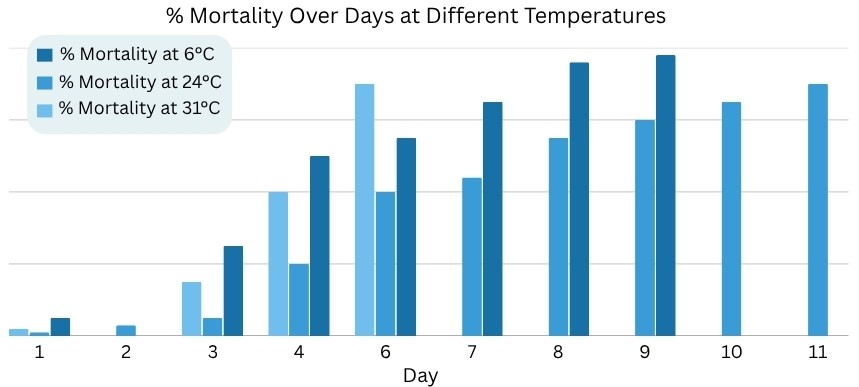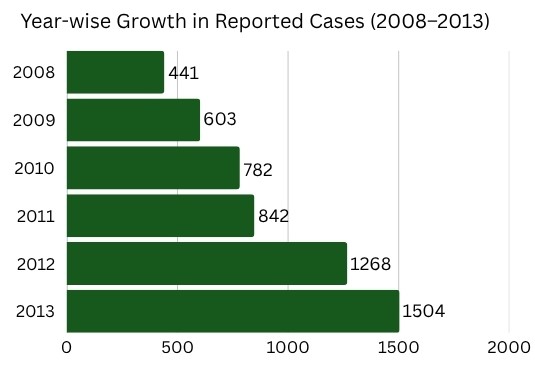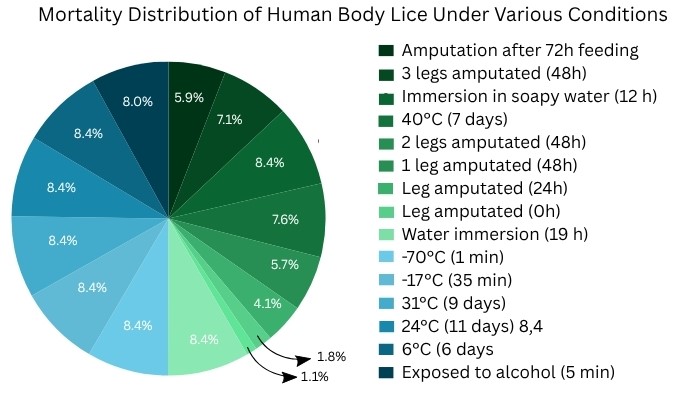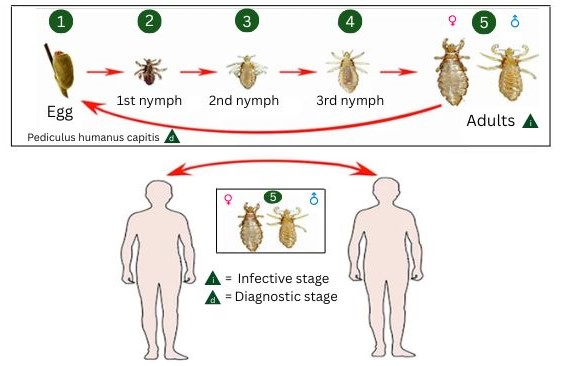Sorry, nothing in cart.
Lice from eyelashes are small parasites that live on the eyelashes and suck blood. They may also cause irritation, redness, and itchiness.
The lice are not very common but can be problematic if they are not treated. Most people get the symptoms mixed up with other conditions like blepharitis or allergy.
This makes it extremely important to properly diagnose the issue and provide proper treatment. Early treatment of lice on eyelashes will help to minimize discomfort, along with preventing passing on to others.
What Are Eyelash Lice?
Eyelash lice are tiny insects that live in the eyelashes and cause itching and redness. They reside at the base of the lashes and live on skin and blood.
They are usually pubic lice (Pthirus pubis), but sometimes head lice (Pediculus humanus capitis) or body lice (Pediculus humanus corporis) live in eyelashes.
Although all three types are tiny and hard to spot, they differ slightly in shape and habits.
Types of lice that can live on eyelashes
Pthirus pubis (pubic lice):
They are broad and short lice that are found primarily in coarse body hair. Pubic lice account for most of the cases of eyelash lice.
A study reveals that infestations of pubic lice have decreased owing to increased numbers of people shaving body hair.

There was an established high correlation (correlation value of 0.9686) with a P value of less than 0.0001 between the reduction in lice and enhanced hair removal.
This shows that lice are losing their habitat, which may lead to them moving to eyelashes.
Pediculus humanus capitis (head lice):
The lice usually infest the scalp but migrate to eyelashes. Of the 5446 cases observed from 2008–2013, 41.2% of children were aged between 6–10 and were infested with lice.
The cases were higher in girls (94.4%) than boys (5.6%), and most cases occurred in winter. Head lice can travel to eyelashes in heavy infestations.

Pediculus humanus corporis (body lice):
They live on clothing and merely come out to feed on the body. Although uncommon on eyelashes, they may be found in cases of poor hygiene.
One study reveals that high heat temperatures (31°C) killed lice at a faster pace than low temperatures like 6°C, showing that lice do not tolerate heat.

How are eyelash lice different from scalp or body lice?
Eyelash lice are mostly pubic lice. These have crab-like claws, which differ from head and body lice. They infest eyelashes and have eye-related symptoms like irritation and inflammation.
Head and body lice are longer and similar to other body parts. Eyelash lice are less active but more irritating due to their position.
The Life Cycle of the Louse
Lice go through three life stages: egg, nymph, and adult. They multiply very quickly; thus, treatment should be started as soon as possible.
The Egg Stage (Nit):
They are tiny white or yellowish eggs stuck to the bottom of eyelashes. They mature after 6–10 days. The adhesive property makes them hard to remove.
The Nymph Stage:
Nymphs look like small copies of the grown-up lice. They grow by moulting three times in 7–10 days. They feed on blood and become more active during their growth.

The Adult Stage:
Adults live for 30 days. They lay eggs and are less painful. Unless they are treated, they keep on increasing.
Timeline of infestation:
Within a week of acquiring pubic lice, symptoms arise. Nits are fast-developing and grow into adult lice, worsening the situation if left untreated. The egg-to-adult life cycle is about 20 days.
Causes and Risk Factors
How do you get pubic lice in your eyelashes?
You can get pubic lice on your eyelashes through intimate body contact with an infected person. Although pubic lice typically infest the groin, they will roam over to eyelashes if the usual area is shaved or bald.
Transmission through close contact, bedding, towels, etc.
Lice are not able to jump or fly. They are spread by crawling. You can acquire them from towels, bedding, clothing, or eye makeup brushes that are shared. Poor hygiene and sharing personal belongings increase the risk.
Can you get eyelash lice by wearing eyelash extensions?
Yes, lice are transmissible through eyelash extensions. Lice or nits may be present in non-sanitized equipment. When salons reuse glue sticks or brushes, there is a risk. One should check the cleanliness standards prior to using extensions.
Symptoms to Watch For
Diagnosis Self-diagnosing
You might attempt to examine your eyelashes in bright light with a magnifying glass or mirror for moving lice or small sticky eggs.
Safe and Effective Treatment Options
Manual Removal
In case of light infestations, you can manually pick out lice and nits with the assistance of tweezers. Sit in front of a light source and use a magnifying mirror. Treat them gently so that you do not damage your lashes.
Petroleum Jelly
Use petroleum jelly twice daily on your eyelashes and eyelids for 10 days. It starves the lice. Gently wipe off with warm water and a clean cloth.
Medications
Medical professionals can prescribe special creams such as permethrin for your eyelids. Do not use scalp treatments. Never apply lice shampoo to your hair around your eyes. It will burn and injure.
Other Treatment Options
Tea tree oil diluted can be fatal to lice. A 5% ointment applied for 14 days cured 60% of the cases. Another trial with tea tree and lavender oil showed 95% mortality of the lice after three applications. However, this oil is irritating to the eyes and should only be used under a doctor’s guidance.
Ivermectin 40 mg is left for resistant cases. A 2023 research study showed two treatments (200 µg/kg, one week apart) cleared lice in 91.6% of 36 participants.
Systemic effect, and it enters spaces that topical treatments cannot. It’s used when lice are resistant to other medications or are at risk of infection. If infection due to lice happens, take Ivermectin.
For lash growth, use Careprost or Lashona Eye Drops. Both are good for the health of the follicles and for lash growth post-treatment.
Case Report 2025 Case Report
2025 Case Report– Topical Permethrin for Pediatric Eyelash Lice:
Topical Permethrin in Children with Eyelash Lice: A 9-year-old girl presented with severe irritation, redness, and swelling of eyelids bilaterally. Slit-lamp examination revealed numerous lice and nits on the eyelashes.
The child was treated with permethrin 1% cream applied topically using a cotton swab. Treatment was repeated once a day for 10 days with a daily wash.
On follow-up, there was complete disappearance of the lice and eggs, and the child had no complications or recurrence.
Feb 2025 – Teen Eye Lice Masquerading as Blepharitis:
A 15-year-old female patient presented with red and swollen eyelids for over a month.
She was diagnosed with chronic blepharitis and was treated with antibiotic and steroid eye drops without relief.
On dermatoscopic examination, lice and nits were noted on the upper and lower eyelashes.
Oral Ivermectin and permethrin cream 60 mg were given. The condition resolved within two weeks.
2023–2024 – Bilateral and Pediatric Cases:
Rare bilateral phthiriasis palpebrarum was reported in a boy aged 7 years who had itching and crusting on the eyelids.
The boy was initially suspected to have allergic conjunctivitis, but proper diagnosis was made only after microscopic examination.
The boy was treated with petroleum jelly and scraping for 14 days. In another report, an 11-year-old patient with lice on the eyelashes was treated with oral Ivermectin 12 mg and eyelid cleaning, with complete recovery.
These cases also indicate how frequently the condition is being misdiagnosed and the need for thorough examination.
What Not to Do
Prevention Tips
When to See a Doctor
Final Thoughts
Eyelash lice are not common, but they are extremely irritating. If you feel there is something wrong with your lashes, don’t disregard it.
Successful treatment includes ridging lice, taking medications safely, and maintaining clean eyes. Medications for head lice are not to be applied to your eyes.
Ivermectin treats infections, while Careprost or Lashona Eye Drops restore lost lashes.
Prevent lice by not sharing personal items and properly keeping pillowcases and makeup brushes clean.
